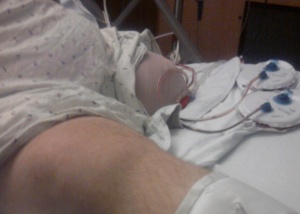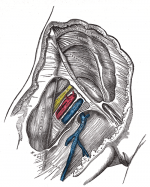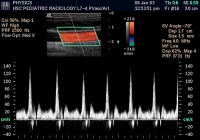Amputations
Top Contributors - Niha Mulla, Cornelia Barth, Laura Ritchie, Saeed Dokhnan, Admin, Rachael Lowe, Adam Vallely Farrell, Tony Lowe, WikiSysop, Kim Jackson, Shaimaa Eldib, Lauren Lopez, Tarina van der Stockt and Sai Kripa
Introduction[edit | edit source]
Amputation is the removal of a body extremity by trauma, prolonged constriction, or surgery. As a surgical measure, it is used to control pain or a disease process in the affected limb, such as malignancy or gangrene. In some cases, it is carried out on individuals as a preventative surgery for such problems. A special case is that of congenital amputation, a congenital disorder, wherefetal limbs have been cut off by constrictive bands. In some countries, amputation of the hands, feet or other body parts is or was used as a form of punishment for people who committed crimes. Amputation has also been used as a tactic in war and acts of terrorism; it may also occur as a war injury.[1]
Causes of amputations[edit | edit source]
- Diabetes
- Chronic leg ulcer leading to Septicaemia
- Phocomelia (congenital absence of the upper arm or leg)
- Malignant tumours e.g. sarcoma (cancer of the connective tissue)
- Arterial insufficiency leading to death or decay of body tissue (gangrene)
Levels of amputations[edit | edit source]
- Through or just above the ankle
- Below the knee
- Above the knee
- Through the foot
- Through the knee
- The whole leg or disarticulate leg
- Removal of the buttock
Signs and symptoms of gangrene[edit | edit source]
- The tissue is cold and blue (Cyanosis)
- Pain
- Intermittent claudication (a cramping pain, induced by exercise and relieved by rest, caused by an inadequate supply of blood to the affected muscles)
- Clamp-like pain because of a spasm in the arteries of the leg
- Intense ischaemic pain
- Increased prevalence in smokers because nicotine causes spasms of blood vessels
- Most often found in muscles of the leg and calf as a result of atheroma of the arteries
- Leg pulses are often absent
Location of pulses[edit | edit source]
- Foot pulse (Medial malleolus or dorsum of the foot)
- Popliteal (behind the knee)
- Femoral (within the femoral triangle)
- If a leg has been amputated because of gangrene, the remaining leg is examined for a pulse
Special investigations[edit | edit source]
- X-rays
- CT scan
- Angiogram (outlines blood vessels)
- Doppler ultrasound (occlusion of vessels)
- Venogram and arteriogram
- Radioactive dye injected into the blood
Arterial insufficiency[edit | edit source]
- Surgery to improve circulation
- Bypass grafts (autogenous graft uses a vein to bypass the obstructed area)
- Synthetic grafts
Management[edit | edit source]
Buerger’s exercises[edit | edit source]
| [2] |
- Stimulates collateral blood flow in the patient’s leg
- It is performed for 20 min.
- The leg is elevated until the toes go white, then lowered, then level
- Repeat 2-3 times to improve collateral circulation
Connective tissue massage[edit | edit source]
Dynamic stump exercises[edit | edit source]
Balance and gait retraining[edit | edit source]
- Improve static and dynamic balance
- Use Parallel bars, walking frame then Crutches (in that order)
- Therapist stands on the amp side, using a belt around the patient’s waist to support
- Rest if the patient feels tired
| [3] | [4] |
| [5] | [6] |
Short wave diathermy (SWD)[edit | edit source]
Through the pelvis to warm the arteries (contraindicated in patients with arterial insufficiency because the warmth leads to increased metabolism, causing a greater demand for nutrients, which are not available)
Post-operative care[edit | edit source]
- Maintain function in the remaining leg and stump to maintain peripheral circulation
- Maintain respiratory function (important with smokers and those patients under general anaesthesia)
Stump care[edit | edit source]
| [7] |
- For hygiene and skin care see handout on amputations
- A hip flexion Contracture may develop because of elevation to reduce swelling
- Stump bandaging is done to ‘cone’ the stump, thereby preventing oedema, which occurs because there is no muscle pump and the stump hangs
- Swelling must be prevented to allow proper attachment of the Prosthesis, and the prevention of Pressure sores
- The stump sock is put on first, then the prosthesis
- The prosthesis must be cleaned and maintained (Children who are still growing, grow out of their prostheses)
Types of wheelchairs[edit | edit source]
- For double lower limb amputations, the wheels are set further back
Recent Related Research (from Pubmed)[edit | edit source]
Failed to load RSS feed from http://eutils.ncbi.nlm.nih.gov/entrez/eutils/erss.cgi?rss_guid=14QrMe-OFeMCUTROXREO2Goj4A_9ueFIW_SXkIUqFfh4iIHk-X|charset=UTF-8|short|max=10: Error parsing XML for RSS
References[edit | edit source]
- ↑ http://en.m.wikipedia.org/wiki/Amputation
- ↑ ladybessviernes, UDM PT Students. Buerger Allen's Exercise. Available from: http://www.youtube.com/watch?v=jQUFmOmX35o [last accessed 01/12/12]
- ↑ Clegstories. Gait Training with C-Leg®: Stance Phase Training. Available from: http://www.youtube.com/watch?v=Xh4rPJFgRx8 [last accessed 08/12/12]
- ↑ Clegstories. Gait Training with C-Leg®: Swing Phase Training. Available from: http://www.youtube.com/watch?v=E11gQs0oIt0 [last accessed 08/12/12]
- ↑ Clegstories. Clegstories. Gait Training with C-Leg®: Sitting Down and Standing Up. Available from: http://www.youtube.com/watch?v=_lBkrLZ4PGo [last accessed 08/12/12]
- ↑ Clegstories. Gait Training with C-Leg®: Stairs. Available from: http://www.youtube.com/watch?v=Z6bvgDaOkcI [last accessed 08/12/12]
- ↑ Richard Major. Physiotherapy Stump or Residual Limb Wrapping. Available from: http://www.youtube.com/watch?v=T1SA_6hzTxQ[last accessed 08/12/12]









